Media | Articles
Final Parking Space: 1987 Toyota Supra Turbo
The middle and late 1980s were great times for fans of slick-looking turbocharged two-door cars plastered with exuberant graphics. I’ve documented plenty of turbocharged Nissan 300ZXs, Mitsubishi Starions, and Ford Thunderbird Turbo Coupes during my explorations of junkyard history, but the Toyota Supra Turbo is an extremely rare find in American car graveyards. Here’s a solid example of the third-generation Supra in a self-service yard located between Denver and Cheyenne.

The Supra evolved from the Celica and its sedan sibling, the Carina, which went on sale in the United States in 1971 (the Carina was discontinued here after 1973). Despite being powered by a low-revving truck engine, the early first-generation Celica proved popular among American car buyers. For 1978, Toyota widened and lengthened the Celica, stuffed a straight-six single-overhead cam engine under the hood, and called it the Celica XX in its homeland. When this car hit our shores as a 1979 model, it was named the Celica Supra.

The Celica Supra name stuck around through the second-generation (1982-1985) cars, which looked very much like their four-cylinder Celica siblings. Then the Celica went to a front-wheel-drive platform derived from the T150 Corona for the 1986 model year, while the Supra remained a rear-wheel-drive machine and became much more evil-looking for its third generation.

Now here was a Toyota that could compete eyeball-to-eyeball for sales versus the hairier versions of the Ford Mustang and Chevrolet Camaro, while causing Nissan and Mitsubishi salesmen even more stress than the Celica Supra had inflicted.

The Supra got even more belligerent for the 1987 model year, when a turbocharged version was introduced in the United States market.
Marketplace
Buy and sell classics with confidence

The 7M-GTE was a highly advanced fuel-injected, distributor-less dual-overhead cam mill displacing 3.0 liters, and it was rated at 230 horsepower and 246 pound-feet for 1987.

That beat the 1987 Nissan 300ZX Turbo and its 200-horse V-6, while blowing the doors off Mitsubishi’s Starion ESI-R and its 176hp turbocharged four-banger. The most powerful Chevy Camaro Z28 engine for 1987 was the L98 5.7-liter small-block with 225 horsepower and 330 pound-feet, while the beefiest factory Ford Mustang engine that year was a 5.0-liter V8 generating 225 horses and 300 pound-feet. That big V-8 torque gave the Detroit ponies an edge versus the Supra in drag racing, but the Supra was more competent on a road course.

The MSRP for this car with automatic transmission was $23,500, or about $66,373 in 2024 dollars. That was quite a bit more than the cost of a new Mustang GT ($11,835, or $33,426 today) or a Camaro Z28 ($12,819, or $36,205 now), but the Supra also came with plenty of standard features that were extra-cost items on those cars.

I’ve found Toyotas of this era in junkyards with well over 400,000 miles on their odometers, but this one barely managed to squeeze past 150,000 miles.

This car is a “49-state” model, not legal for new sale in California.

A five-speed manual transmission was base equipment, but this car has the four-speed automatic.

The paint is weathered and the interior shows signs of lengthy outdoor storage, so I think this car got parked years or decades ago and didn’t move under its own power during that time.

These cars are nearly impossible to find in the Ewe Pullets of the land because they retain a devoted enthusiast following to this day. Most rough ones get intercepted before they can reach this sort of final parking space.

I suspect that this car will be stripped clean by junkyard shoppers, or it may even be sold whole to a Supra aficionado.

Production of the third-generation Supra continued through 1993, after which it was replaced by the even faster fourth-generation car.
***
Check out the Hagerty Media homepage so you don’t miss a single story, or better yet, bookmark it. To get our best stories delivered right to your inbox, subscribe to our newsletters.


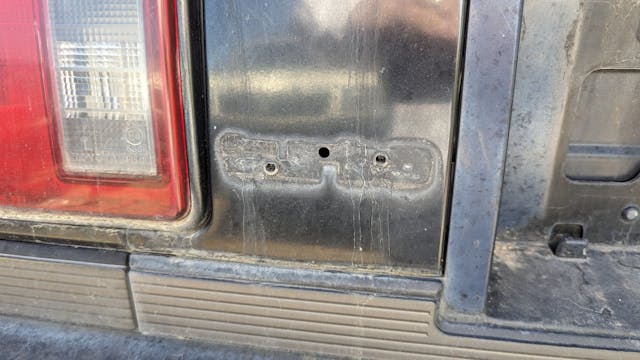
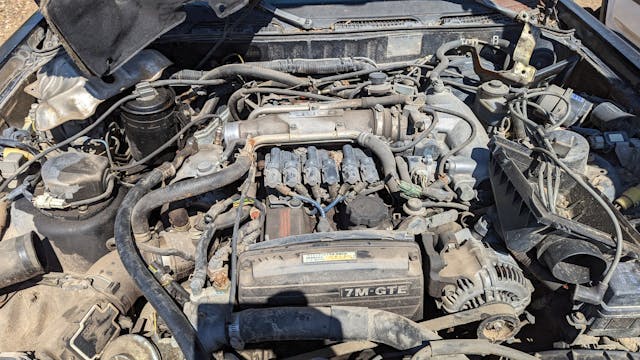
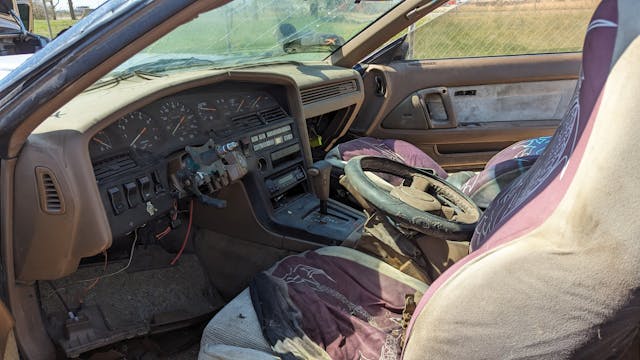
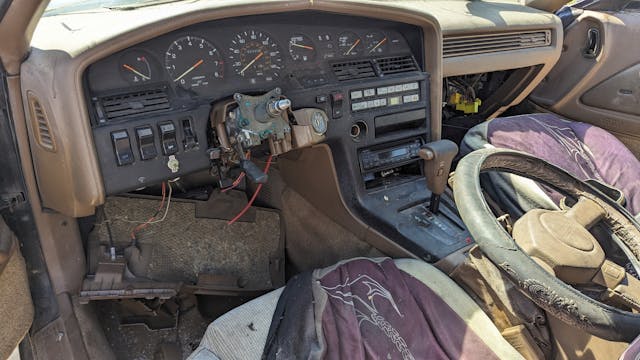
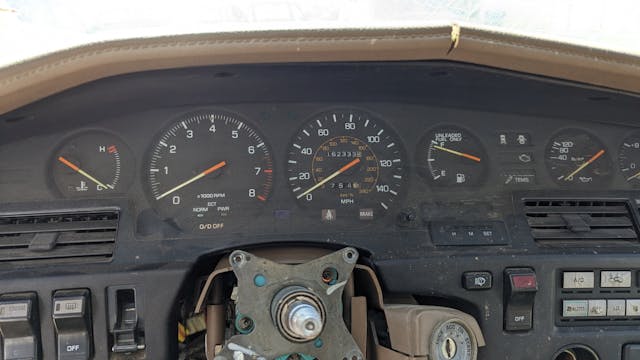

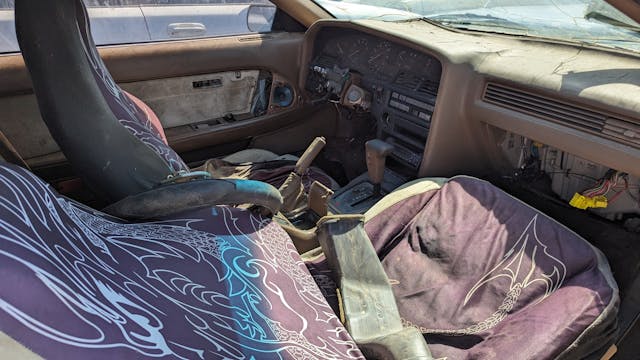
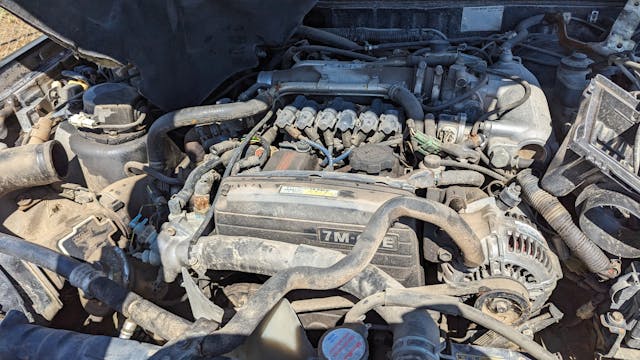
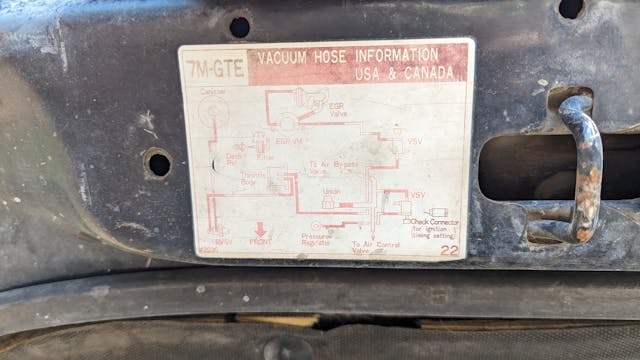
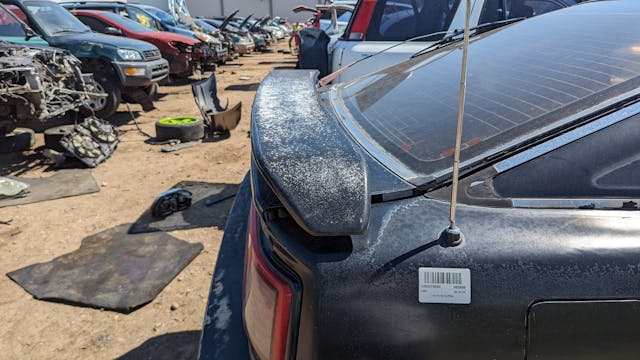



















































My Supra love really was cemented with the 3rd generation car when my parents were at the Toyota dealer buying the ’86 Toyota minivan. Sitting in that car I said I wanted one as a 13 year old. The Mark 4 Supra only further pushed that love. It’s been 22+ years owning my ’97 and enjoying every minute of it.
Hey Gary! I think I remember you from the old Mkiv email list days. These cars were amazing then and are just as enjoyable today!!
That thing will get harvested quickly. Tons of good parts; front and rear bumper covers, perhaps even the crash bars, too. The turn signal switch, hard to find, is already gone. Too bad the rear was supported by the gas tank; the tank is very hard to find, and is usually toast in rust-belt climates. The diff is probably a LSD, which is desirable, pretty easy to pull, and probably decently priced in a Upullit yard. The side trim pieces look to be in good shape also, not having suffered internal rust-bulge.
You didn’t happen to notice if it still had the driver side window switch assembly did you? My daughter needs on for her 89 Turbo. 🙂
The thing about the Camaro and Mustang is that those horsepower figures left a lot of room to grow
I know folks with a lot more complete versions of that Supra that can’t get them across the finish line due to parts issues
I have a 89 7mgte manual project car I’m currently working on. Finding OE parts are hard to find. Even if you can find parts its prices are insane. $500/700 for steering rack for example, probably buy the rebuild kit and do it myself. $200/$300 just for the emblem on the front cover. Don’t get me started on the exterior trim molding which are impossible to find in good shape, mine is actually two pieces! So far I’ve acquired a 57trim billet wheel ct26 turbo, with 11lb waist gate, which I plan to hood dump somehow. 650 evo injectors, 2j coils, front mount intake with 90mm throttle body, old school Enkei98 mesh wheels which I have plans to send to lovbee20 out in Cali to be made into staggered 18s, coil overs with adjustable dampers and looking into getting side and rear hatch louvers to stay with my 80’s themed build. I have a tone of things to do and buy still but when I get everything acquired I need for the build, it will be one sweet ride. I’ve named it “Gossamer” after my favorite looney tunes character and he will be on the car somewhere.
I loved my 1986 Toyota Supra and its unique origami design. It wasn’t fast by today’s standards but was still sporty enough and fun to drive and of course was Toyota dependable. I owned it for 19 years until child #2 came along and I needed a car with four doors and a more accessible back seat. It was in very good condition and wish Bring a Trailer would have been around so that it could have been exposed to wider buyer audience.
These were kind of the bland Supra years for me. I loved the sharp lines and flares of the 2nd gen, and the exotic looks/power of the 4th gen, but these were never really on my radar.
I was thinking about buying one, but reading here about parts issues make me think I shouldn’t. I have a 76 Celica that doesn’t sound as bad for parts now
I had a 77 Celica that rotted away to nothing… hopefully yours is in better shape
I bought new in’87 a Supra EXACTLY like the burgundy one in the picture. Targa top, turbo. Loved driving that car. Only problem I had with it was 1st gen. turbos were not what is available now. I sold it with 150,000 miles and it was on its 3rd turbo. But I wish I still had it.
I wish the author had explained why the junked car was a 49 state model and not available in Cal. I bought new in the spring of ’87 a targa top turbo in Auburn, Cal.
Emissions